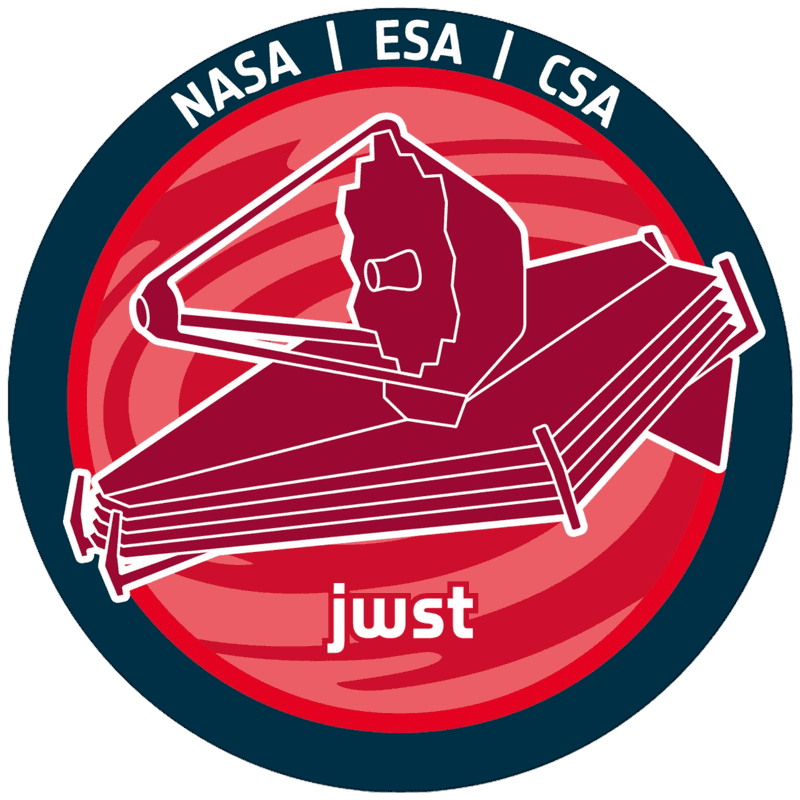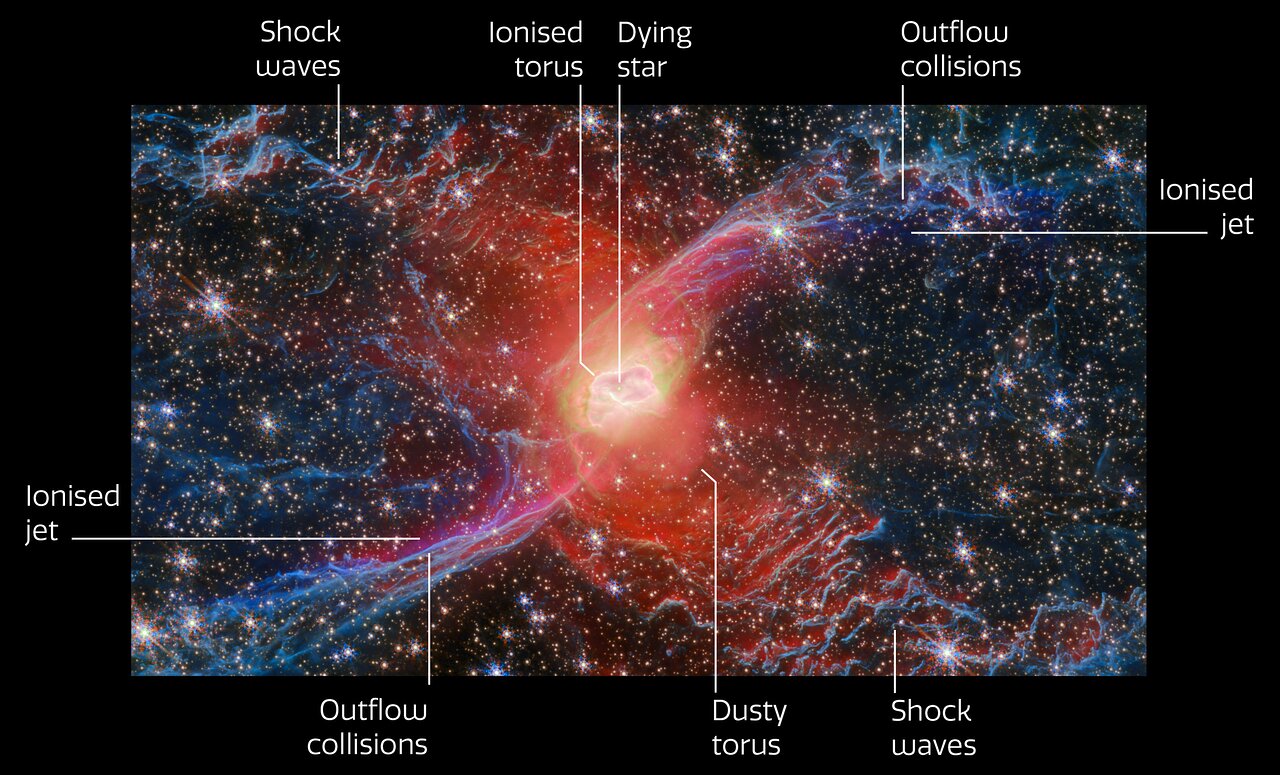Red Spider Nebula, NGC 6537 (annotated)
This new annotated NASA/ESA/CSA James Webb Space Telescope Picture of the Month features a cosmic creepy-crawly called NGC 6537 — the Red Spider Nebula. Using its Near-InfraRed Camera (NIRCam), Webb has revealed never-before-seen details in this picturesque planetary nebula with a rich backdrop of thousands of stars.
Planetary nebulae like the Red Spider Nebula form when ordinary stars like the Sun reach the end of their lives. After ballooning into cool red giants, these stars shed their outer layers and cast them into space, exposing their white-hot cores. Ultraviolet light from the central star ionises the cast-off material, causing it to glow. The planetary nebula phase of a star’s life is as fleeting as it is beautiful, lasting only a few tens of thousands of years.
Starting at the centre, this image indicates the location of the planetary nebula’s central star, which has a scorching temperature of 160 000 K. Surrounding this dying star is a doughnut-shaped torus of gas and dust, the innermost portion of which has been ionised by the fierce ultraviolet radiation from the superheated central star. The remainder of the torus, farther from the star, is much colder and is slowly expanding outward.
The rumpled appearance of the gas that forms the spider’s ‘legs’ comes from the interaction between outflows that emerge from opposite sides of the star and material that is swept up by the outflowing gas, creating shock waves. Webb’s view reveals for the first time the full extent of the nebula’s outstretched lobes.
These lobes, shown in blue, are traced by light emitted from H2 molecules, which contain two hydrogen atoms bonded together. Stretching over the entirety of NIRCam’s field of view, these lobes are shown to be closed, bubble-like structures that each extend about 3 light-years. Outflowing gas from the centre of the nebula has inflated these massive bubbles over thousands of years.
Tracing out an elongated purple ‘S’ shape, ionised iron atoms mark where a jet has emerged from the vicinity of the central star and collided with material that was cast off by the star previously.
The observations used to create this image come from Webb GO programme #4571 (PI: J. Kastner) as part of a joint Chandra-JWST observing programme, which aims to understand how bipolar planetary nebulae like the Red Spider Nebula are shaped by the outflows and jets that emerge from the stars at their cores..
[Image Description: The central region of a planetary nebula is shown in a box. Labels indicate “Shock waves”, “Outflow collisions”, and an “Ionised jet” in the dust on both sides of the nebula. Close to the centre, “Dusty torus” and “Ionised torus” are marked. In the very middle, a faint dot inside a blotchy pink cloud is labelled “Dying star”. Bright stars surround the nebula and can be seen through the dust layers.]
Links
- Science paper
- NIRCam image
- Slider tool: Hubble and Webb's views of NGC 6537
- Image on ESA website
- Pan video
- Transition Video: Hubble and Webb's views of NGC 6537
- Space Sparks Episode
ESA/Webb, NASA & CSA, J. H. Kastner (Rochester Institute of Technology)
About the Image
| Id: | potm2510b | |
|---|---|---|
| Type: | Chart | |
| Release date: | 28 October 2025, 14:00 | |
| Size: | 3249 x 1966 px | |


